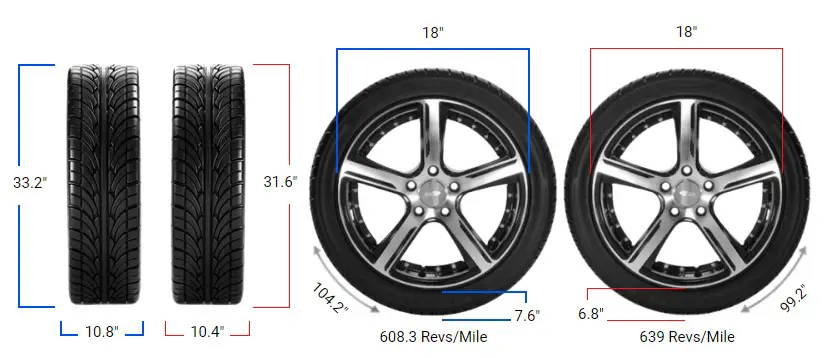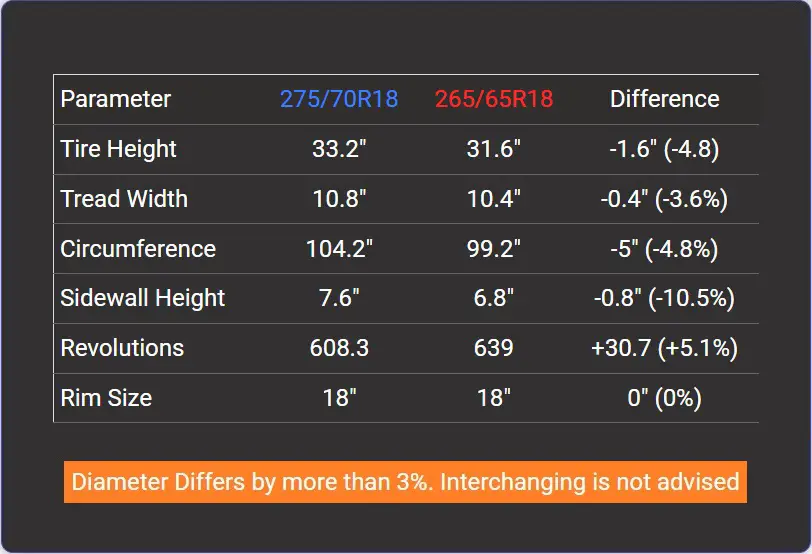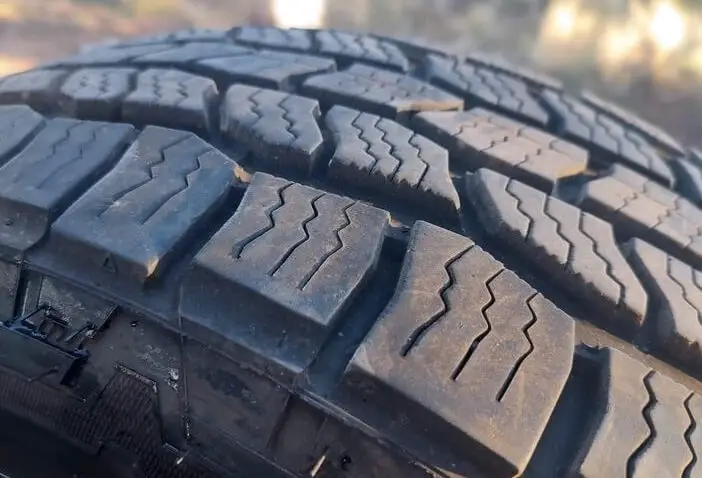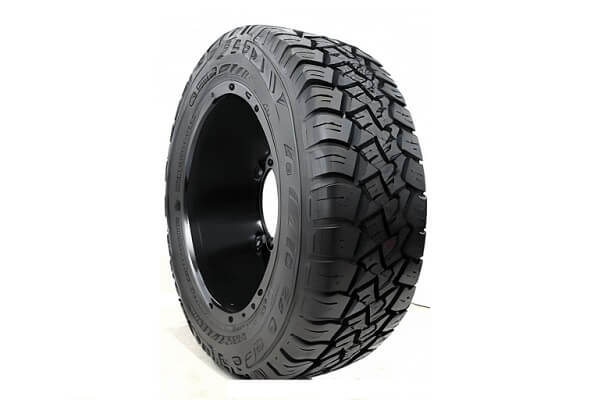Tire Size 275/70r18 vs 265/65r18

Switching from 275/70R18 to 265/65R18 tires can have various effects on your vehicle’s performance, both on and off the road. While the differences in size may seem small, they can impact factors such as ground clearance, gas mileage, and speedometer accuracy. Let’s explore the key considerations when making this tire size change.
- The overall diameter of 265/65R18 tires is 4.8% smaller than 275/70R18 tires
- The width of 265/65R18 tires is 3.6% narrower than 275/70R18 tires
- The sidewall height of 265/65R18 tires is 10.5% lower than 275/70R18 tires
- Speedometer readings will be affected, showing a slightly slower speed than actual
275/70r18 vs 265/65r18 Table
The main difference between 275/70R18 and 265/65R18 tires is the overall diameter, with the latter being 1.59 inches (40.5 mm) or 4.8% smaller than the former.

Fitment Guide
The diameter difference between 275/70R18 and 265/65R18 tires exceeds the acceptable range of ±3%. As a result, this tire interchange is not recommended without making necessary adaptations to prevent issues such as rubbing or clearance problems.
On-Road Impact
Switching from 275/70R18 to 265/65R18 tires can have several effects on your vehicle’s on-road performance. Here are some aspects to consider:
- Speedometer Accuracy: Due to the smaller overall diameter of 265/65R18 tires, your speedometer will read 4.8% higher than your actual speed. This means that when your speedometer reads 20 mph, you’ll actually be traveling at 19.04 mph.
- Ride Comfort: The lower sidewall height of 265/65R18 tires may result in a slightly firmer ride compared to 275/70R18 tires. This is because the shorter sidewall provides less cushioning against road imperfections.
- Gas Mileage: The narrower width and shorter circumference of 265/65R18 tires may lead to a slight improvement in gas mileage due to reduced rolling resistance. However, the difference may be negligible in real-world driving conditions.
- Aesthetics: The smaller overall diameter and lower sidewall height of 265/65R18 tires may alter the appearance of your vehicle. The wheel wells may appear more exposed, and the vehicle may seem to sit lower to the ground.

Off-Road Impact
If you use your vehicle for off-road adventures, switching from 275/70R18 to 265/65R18 tires can have some implications. Consider the following:
- Ground Clearance: The smaller overall diameter of 265/65R18 tires will reduce your vehicle’s ground clearance by approximately 0.8 inches (20.25 mm). This may affect your ability to navigate over obstacles and rough terrain without risking damage to the undercarriage.
- Durability & Wear: The taller sidewall of 275/70R18 tires provides better protection against damage from rocks, roots, and other off-road hazards. Switching to 265/65R18 tires with a lower sidewall height may make them more susceptible to punctures and cuts.
What is the Difference Between 275/70R18 and 265/65R18?
The main difference between 275/70R18 and 265/65R18 tires is the overall diameter. The 275/70R18 tire has a diameter of 33.16 inches (842.2 mm), while the 265/65R18 tire has a diameter of 31.56 inches (801.7 mm).
This means that the 275/70R18 tire is 1.59 inches (40.5 mm) taller than the 265/65R18 tire, which is a significant difference of 4.8%.

Can I Use 265/65R18 Instead of 275/70R18?
It is not recommended to use 265/65R18 tires instead of 275/70R18 tires. The diameter difference between these two tire sizes is 4.8%, which exceeds the generally accepted limit of 3%.
Using tires with a diameter difference greater than 3% can lead to various issues, such as inaccurate speedometer readings, altered vehicle handling, and potential rubbing or clearance problems.
If you still want to make this switch, it is crucial to make necessary adaptations to your vehicle to prevent these issues.
How Much Taller Is a 275/70R18 Tire Than a 265/65R18?
A 275/70R18 tire is 1.59 inches (40.5 mm) taller than a 265/65R18 tire. This height difference is due to the larger overall diameter of the 275/70R18 tire, which stands at 33.16 inches (842.2 mm), compared to the 31.56-inch (801.7 mm) diameter of the 265/65R18 tire.
How Much Wider is a 275/70R18 Tire Than a 265/65R18?
A 275/70R18 tire is 0.39 inches (10 mm) wider than a 265/65R18 tire. The width of a 275/70R18 tire is 10.83 inches (275 mm), while the width of a 265/65R18 tire is 10.43 inches (265 mm). The difference in width between these two tire sizes is approximately 3.6%.
Our Observations
After analyzing the differences between 275/70R18 and 265/65R18 tires, we conclude that switching to the smaller tire size can have both benefits and drawbacks.
On the one hand, the reduced rolling resistance of 265/65R18 tires may slightly improve gas mileage, and the altered aesthetics may appeal to some drivers.
On the other hand, the reduced ground clearance and lower sidewall height may negatively impact off-road performance and ride comfort.
The speedometer inaccuracy of 4.8% is also a significant factor to consider, as it may affect your ability to monitor your speed accurately. Ultimately, the decision to switch tire sizes should be based on your specific driving needs and preferences, while keeping in mind the potential trade-offs involved.

Meet Caitlin McCormack, a Tire Size Expert and Blogger Passionate About Everything Related to Tires. With Years of Experience in the Tire Industry, Caitlin Has Become an Expert in Tire Sizes and Their Impact on Vehicle Performance.
